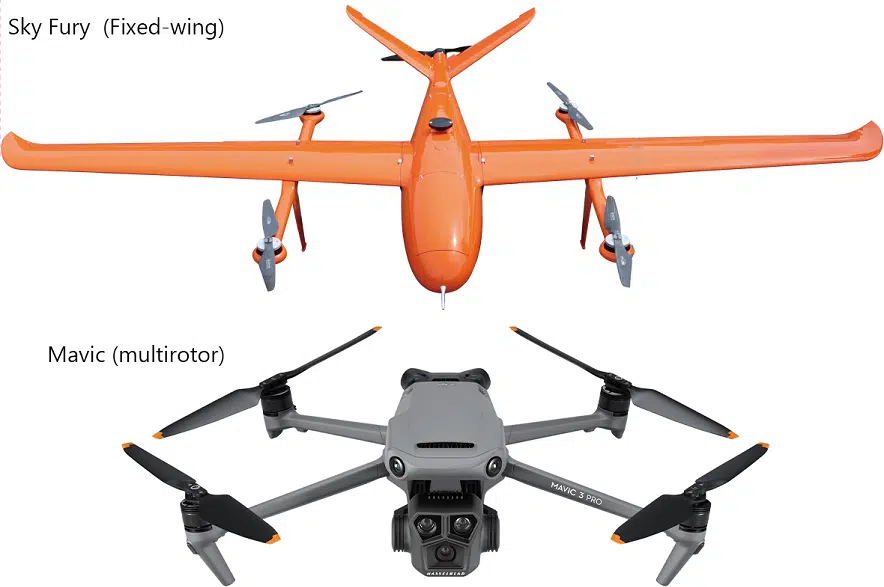It’s a bird … It’s a plane … No, it’s the police!
The Saskatchewan RCMP is taking to the skies by adding aerial drones to every detachment in the province.
The RCMP said the drones — which officers call “remotely piloted aircraft systems” — will be used for crime-scene photography, incident monitoring, accident reconstruction, “reconnaissance of hazardous environments,” search and rescue, disaster response and more.
“Unmanned aircraft allow RCMP officers to approach investigations, unfolding critical incidents, and public safety concerns in a more modern, innovative, and efficient way,” the Mounties explained in a statement Friday.
“Calls for services can be responded to quicker, crime scenes can be seen from a bird’s eye view, and suspects can be located with lower risk to them, the public and our officers.”
Drones have already been distributed to a third of the detachments around the province, and the federal police force is aiming to equip all of the remaining detachments by April. Twenty-nine Saskatchewan officers have been trained as drone pilots so far.
While the idea of mass aerial surveillance may raise privacy concerns for some, the RCMP said it will take steps to ensure privacy isn’t violated.
“These unmanned aircraft are only used to assist investigations and calls for service when warranted,” the Mounties said in a statement.
“If there is an expectation of the public’s privacy, officers must obtain a judicial authorization or consent from the property owner to employ an unmanned aircraft. Consent and judicial authorization are not required when operating within public property such as streets, roads, parks, Crown land, etc.”
The RCMP added the new fleet of drones will not be used “to perform widespread surveillance under normal circumstances,” and said the unmanned aircraft will only be used in a surveillance role with judicial authorization “or where urgent/serious incidents impacting public safety make it impractical to first obtain a search warrant.”
The RCMP’s drones are not equipped with facial-recognition technology, the police service emphasized, and all flights must be documented.
The police service will operate two types of drones. The first is a fixed-wing aircraft called Sky Fury that can cruise at 90 kilometres per hour for up to seven hours. The other, called Mavic, is a multi-rotor aircraft that can take off and land vertically, and remain airborne for one hour.
Drones use to be ‘piloted’ by Battlefords RCMP
The RCMP said it’s already seen success with its drone use around the province, and the Battlefords detachment will be testing the unmanned aircraft on active police calls over the next two days.
The pilot program – no pun intended – will see police in the Battlefords using the Sky Fury drone “to support officers actively responding to calls in the community of North Battleford.”
The goal of the trial is to provide better awareness to officers on the ground, the RCMP said, with the drone operators – one pilot and one relaying information from the video feed – describing active crime scenes to arriving officers, locating fleeing suspects, and searching for “suspects who failed to comply with police (eg. Impaired drivers fleeing from police in a vehicle).”
“We’re really excited to see this project take flight,” Devin Pugh, the officer in charge of the Saskatchewan RCMP’s Support Services Section, said in a statement.
“By utilizing this innovative technology, we are able to provide crucial air support for our officers on the ground in real time. Expanding this to all of our detachments across Saskatchewan will most certainly increase our ability to effectively respond to crimes in progress and support search and rescue operations much more efficiently.”











